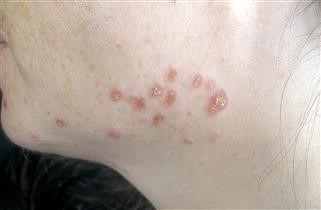The Infertility Org
Aetna Infertility Guidelines
You found the complete source for total information and resources for Aetna Infertility Guidelines online.
Problems with sexual intercourse These can include trouble keeping or maintaining an erection sufficient for sex (erectile dysfunction), premature ejaculation, painful intercourse, anatomical abnormalities such as having a urethral opening beneath the penis (hypospadias), or psychological or relationship problems that interfere with sex. A history and physical examination can help direct the evaluation. Pretesticular causes of infertility Pretesticular causes of infertility include congenital or acquired diseases of the hypothalamus, pituitary, or peripheral organs that alter the hypothalamic-pituitary axis. Germ cells (precursors to spermatozoa) are derived from the gonadal ridge and migrate to the testicle before testicular descent. Signs of infertility in women In women, signs of infertility may include: Pain during sex Pain during sex, or dyspareunia, can be a sign of an underlying health problem that may influence a woman's fertility. Other medical techniques are e.g. tuboplasty, assisted hatching, and preimplantation genetic diagnosis.
Some men respond with an increase in testosterone levels; many also recover normal sperm counts. Microsurgery in Clinical Urology. (PDF, 5 MB) Urology, 1975. As new technology becomes available, fertility treatment is now accessible to more people, and success rates and safety are improving all the time. Delayed conception and active and passive smoking.
Here are Some Even more Resources on Fertility Treatment Options for Infertility

A lot more Resources For Fertility Treatment Options for Infertility
Progesterone deficiency can be corrected by the administration of progesterone during the luteal phase, starting 48 hours after ovulation. [204] Patients with hyperprolactinemia need a thorough evaluation to exclude a pituitary microadenoma. She will also undergo a gynecologic examination and a number of tests: Laparoscopy involves inserting a thin tube with a camera on to investigate and possibly remove unwanted tissue.
Even more Info About Difference Between Low Sperm Count and Infertility
Primary Lymphoma of Kidney. (PDF, 586 KB) The Journal of Urology, 1973. No consensus exists as to whether the medical treatment should precede surgery or vice versa. [154, 155, 156] Those who prefer medical treatment first argue that the size of the endometriosis decreases; therefore, surgery will be easier and shorter. 6 The initial history should cover menstrual history, timing and frequency of intercourse, previous use of contraception, previous pregnancies and outcomes, pelvic infections, medication use, occupational exposures, substance abuse, alcohol intake, tobacco use, and previous surgery on reproductive organs. About 92 out of 100 couples who are trying to get pregnant do so within two years.[citation needed] Women become less fertile as they get older. Physical damage to the ovaries, or ovaries with multiple cysts, may affect their ability to function. Mannitol Induced Central Nervous System Toxicity in Renal Failure. (PDF, 4 MB) Investigative Urology, 1972.
A lot more Resources For Aetna Infertility Guidelines
4) Uterine fibroids: Fibroids are very common (approximately 40% of women may have them) and the mere presence alone does not necessarily cause infertility. A woman of reproductive age who is using artificial insemination to conceive (with either partner or donor sperm) after 6 failed trials. Consider earlier referral to infertility specialists where: - the woman is aged 36 years or over. - there is a known clinical cause of infertility or a history of predisposing factors for infertility. - treatment is planned that may result in infertility (such as treatment for cancer). - People who are concerned about their fertility and who are known to have chronic viral infections such as hepatitis B, hepatitis C or HIV. Existing definitions of infertility lack uniformity, rendering comparisons in prevalence between countries or over time problematic. Women trying to conceive often have depression rates similar to women who have heart disease or cancer.[18] Emotional stress and marital difficulties are greater in couples where the infertility lies with the man.[19] Older people with adult children appear to live longer.[20] Why this is the case is unclear and may dependent in part on those who have children adopting a healthier lifestyle, support from children, or the circumstances that led to not having children.[20] [edit] In many cultures, inability to conceive bears a stigma. In fact, female age-related infertility is the most common cause of infertility today. Demographic definitions of infertility An inability of those of reproductive age (15-49 years) to become or remain pregnant within five years of exposure to pregnancy. (DHS2) An inability to become pregnant with a live birth, within five years of exposure based upon a consistent union status, lack of contraceptive use, non-lactating and maintaining a desire for a child. (Trends in prevalence4). Intracytoplasmatic Sperm Injection (ICSI) An intracytoplasmatic sperm injection is also a form of artificial insemination. About 85% of couples will have had a pregnancy by that point. “If they are over 30, they should seek evaluation after six months.” Continued Common causes of male infertility The “male factor” contributes to infertility around half the time, and about one third of the time, it's the main cause of infertility. For women aged 35, about 94% who have regular unprotected sexual intercourse get pregnant after three years of trying. As the major causes of infertility are sperm abnormalities, ovulation dysfunction, and fallopian tube obstruction, the preliminary adviced investigations for the infertile couple should be focused on semen analysis (to be compared with the WHO reference values [27]), detection of ovarian function by hormonal assay (early follicular FSH and LH levels, and mid-luteal progesterone), and evaluation of tubal patency by hysterosalpingography (HSG) [17-32], (Appendix 3). PID is a major cause of tubal infertility and can lead to ectopic pregnancy, which may further damage the reproductive system. Additionally, surgery, radiation or chemotherapy to treat tumors can affect male fertility. If conservative medical treatments fail to achieve a full term pregnancy, the physician or WHNP may suggest the patient undergo in vitro fertilization (IVF). Of the successful pregnancies, 85% are achieved within the first 4 cycles of intrauterine inseminations.
Previous Next
See also
Female Infertility Treatment Home Remedy
Pineapple for Infertility
Infertility Profile Female